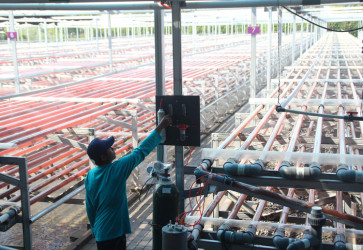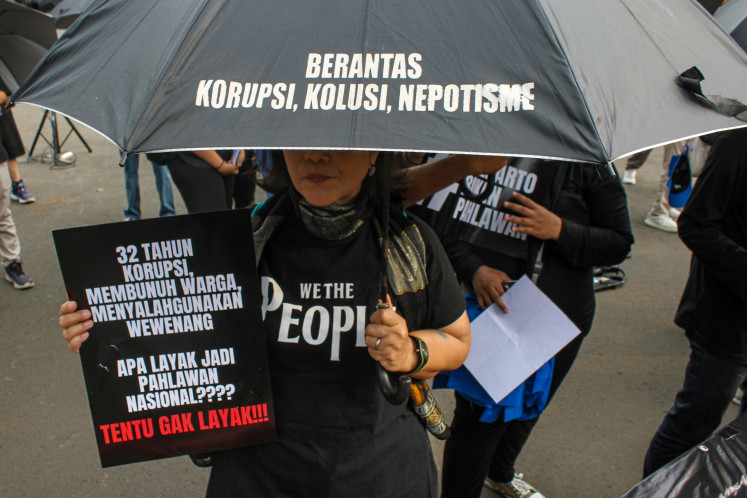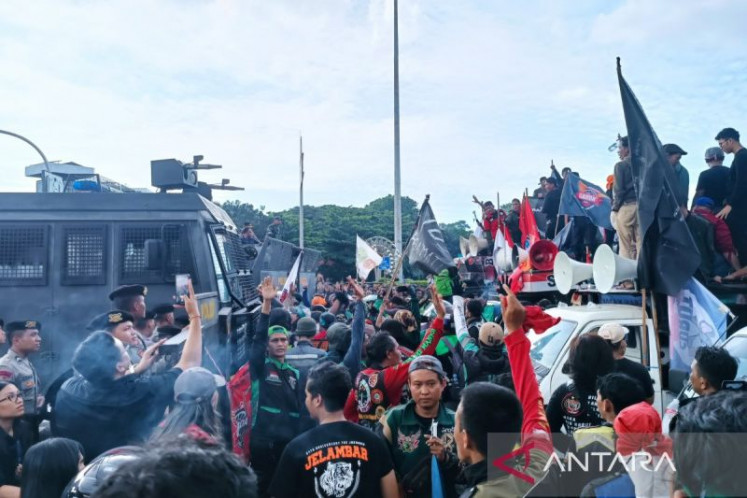Twenties: 20 traditional dishes Indonesian mothers serve for Idul Fitri
Opor ayam, rendang, soto banjar and more -- these are 20 traditional Indonesian dishes that most Indonesian mothers would only cook for special occasions, like Idul Fitri.
Change text size
Gift Premium Articles
to Anyone
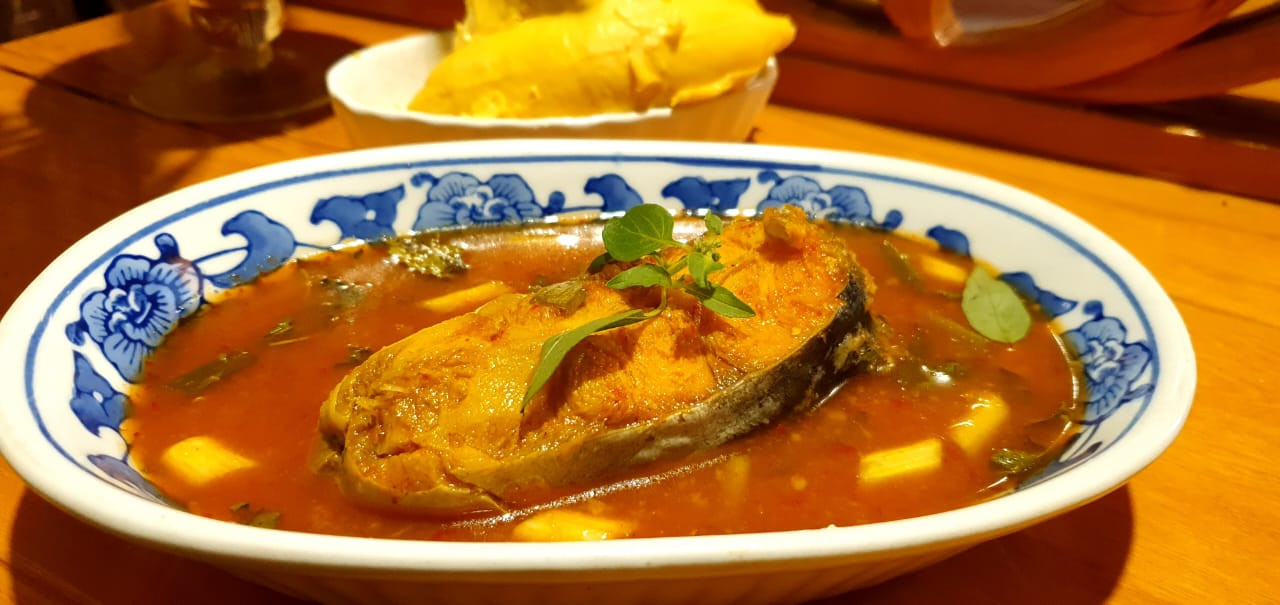
'Twenties' is a new column in which we give our top 20 list of anything and everything of interest, from food and history to pop culture and lifestyle — and more.
They have the recipes and can cook these 20 traditional Indonesian dishes all year round, but most Indonesian mothers would only cook them on special occasions, like Lebaran (Idul Fitri).
1. Opor Ayam
The opor ayam (chicken curry) and ketupat combination is a must-have dish during Idul Fitri. Although it is widely available all year long, there is something special about eating opor ayam and the supple rice cakes after the Eidprayers. Opor dishes have the symbolic meaning of sincerely admitting mistakes and apologizing, since it contains coconut milk or santan, which sounds similar to "pangapunten" — "sorry" in Javanese.
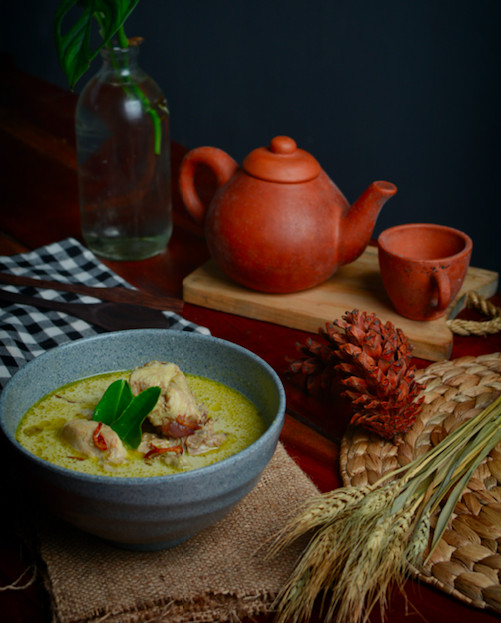
The dish has existed since days of yore and is said to have come from the island of Java, particularly Surakarta, Central Java. It is typically made from chicken meat cooked in coconut milk with a rich seasoning of various spices such as lemongrass, turmeric and galangal.
2. Rendang
Rendang or randang is a beef dish from Minangkabau, West Sumatra, which is also easy to find throughout the year, but has a particular feel when served during Lebaran. This might be due to the fact that many households serve their own homemade version of rendang instead of store-bought ones.
The process of cooking rendang takes hours, and the amount of cooking time does affect its final result. Usually, each house has its own preferences as to dry or wet rendang (although Minang people used to say that wet rendang is kalio and not rendang). In addition to the essential ingredient of meat, rendang uses coconut milk and a mixture of various spices that are mashed together, including chili, lemongrass, galangal, turmeric, ginger, garlic, onion and various other spices.
3. Sanggring
Also known as kolak ayam (chicken compote), sanggring is a local delicacy from Gumeno village, Gresik regency, East Java. It is made of chicken meat in a compote-like broth of coconut milk seasoned with green onions, cumin, coconut and brown sugar. The tradition calls for the cuisine to be fully prepared and served only by men.
It was said that during his sojourn in Gumeno village, propagator of Islam Sunan Dalem fell ill and was cured after eating this dish. This incident resulted in both the tradition for men to make sanggring on the 23rd night of Ramadan and its name, which comes from the local word "sang", which means king or ruler, and "gring", which means dry or sick.
4. Maksuba
Maksuba is a Palembangnese layer cake made from duck egg, sweetened condensed milk, melted butter, vanilla and sugar. The sweet batter is layered one by one while baking, typically until it reaches 15 layers, and usually takes three hours to finish.
In the past, maksuba could only be made by a panggong, a title held by an expert cook or a bride-to-be to prove her worth in a household kitchen. These brides-to-be would bring the cakes to their future in-laws to prove they were ready to start married life with their sons. Other than marriage, the cakes are also presented on special occasions, like Lebaran, as a form of love and respect.
5. Gulai Nangka
Gulai nangka or jackfruit curry, locally called gulai cubadak by the Minangkabau tribe, in Padang, West Sumatera, is a complex dish made from young jackfruit. The word "cubadak" in the Minang language means young jackfruit and is usually associated with the local saying, "One gets the sap, another enjoys", due to the sticky sap of the fruit one must contend with during its preparation.
The flesh of young jackfruit is then cooked in a concoction of curry spices: pepper, turmeric, coriander, ginger, galangal, onion, red chili, garlic, nutmeg, fennel, cinnamon, lemongrass, cumin and coconut milk.
6. Bebek Gulai Kurma
Bebek gulai kurma (duck curry) can be a misleading name, since kurma means "date" in bahasa Indonesia — yet there are no dates in this dish. Kurma or korma, for the Acehnese and Malay people, refers to a type of curry spice combination, rather than the dried palm fruit.
This curry calls for pandan leaves, temurui leaves, lemongrass, coconut milk, cloves, cinnamon, nutmeg and cardamom. Bebek gulai kurma contains pieces of duck meat, but some households might also serve ayam gulai kurma (chicken date curry) with the same spices. The dish is decadent with a distinctive aroma that comes from temurui leaves or curry leaves, which are widely used in several Acehnese specialties.
7. Ayam Bumbu Anam
The ayam bumbu anam dish is said to have originated in Lahat regency, Palembang, South Sumatra, but this dish is also quite popular in the Bangka Belitung Islands.
Often said to be the Sumatran version of opor, anam has a more savory taste with a more complex combination of spices, including fingerroot, mango ginger, aromatic ginger, lemongrass, bay leaves, galangal, onion, garlic, candlenut, turmeric, coriander, salt and cumin. The cooking method is more or less the same — the chicken is boiled in coconut milk and a mixture of spices that have been mashed and sauteed.
8. Ayam Gagape
If Palembang has ayam bumbu anam, then Makassar has ayam gagape (chicken gagape), which at first glance also looks like opor ayam. However, the original ayam gagape recipe calls for roosters' meat. In addition, when served, ayam gagape is sprinkled with grated coconut that has been roasted.
Ayam gagape is made by boiling chicken meat in coconut milk and a mixture of spices: lemongrass, shallots, galangal, ground coriander, cumin, turmeric, garlic, pepper and salt.
9. Bika Ambon
Bika ambon is a Medanese specialty treat made from tapioca flour, eggs, sugar, pandan leaves, lime leaves, lemongrass, turmeric, salt and coconut milk mixed with palm wine or other fermented liquids; it has a stringy appearance after cooking it for 12 hours.
The cake was inspired by bika or bingka, a typical Malay dish. The word "ambon" in the name itself does not refer to the Ambonese tribe but is an abbreviation of Amplas Kebon, the name of the area that is said to be the birthplace of bika ambon.
10. Kue Delapan Jam
Palembangnese kue delapan jam gets its name from the cooking process, which takes exactly eight hours. Just like maksuba, kue delapan jam also calls for duck eggs, granulated sugar, sweetened condensed milk and butter. The batter is then steamed for eight hours, no more and no less, as it affects the texture and taste. The correctly made kue delapan jam will have a pudding-like texture and signature perforated look.
The cooking time also implies a philosophy of balanced life: in the 24 hours of a day, one must divide them evenly into work, rest and worship. Usually served on special occasions like weddings and Idul Fitri, kue delapan jam used to be only served to the nobles of the Palembang Darussalam Sultanate.
11. Madu Mongso
Madu mongso is a traditional Lebaran snack from East Java, particularly Ponorogo and Trenggalek. This sticky sweet snack is made from black sticky rice tape, coconut milk, vanilla, sugar, brown sugar, dates and pandan leaves boiled until it reaches a thickness akin to dodol.
The name madu mongso literally means “honey food.” The sweetness of madu mongso is said to be a symbol of the sweetness of victory after fasting for a full month during Ramadan.
12. Pindang Tempoyak
Pindang tempoyak is a dish that combines two Palembang specialties, namely pindang, a seafood soup with spices, and tempoyak, fermented durian chutney. Because the aroma is quite strong and can linger for days, this dish is usually only made at home if there is a special event, like Lebaran.

Pindang tempoyak usually uses river fish meat, such as catfish or tilapia, which is then cooked in water seasoned with slices of pineapple, scallions, basil, chili, shallots, garlic, turmeric, galangal, lemongrass, salt and sugar, like a typical pindang. However, tempoyak is added to make the sauce thicker and release a distinctive aroma.
13. Soto Banjar
Soto Banjar is a typical soup of the Banjar tribe from South Kalimantan, which has a fragrant aroma of spices such as shallots, garlic, pepper, cinnamon, nutmeg and cloves and is often mixed with a little dairy. This soup contains shredded chicken, with the addition of cakes, boiled potatoes, boiled eggs and chopped carrots.

The spices are first sauteed with a tiny amount of cooking oil or ghee until fragrant before added them to the chicken stew. These spices are then filtered, so they do not get into the bowl when served.
14. Ayam Woku
Woku is a special seasoning from Manado, North Sulawesi, usually used to cook meat. There are two types of woku, namely woku balanga, which is cooked with pots, and woku daun, which is cooked in leaves, mainly woka leaves, a kind of palm leaf often used to wrap rice.
This spicy yellow dish is rich in aromatic ingredients such as pandan leaves, turmeric leaves, basil leaves, lime leaves and lemongrass, which makes it not only spicy but also fragrant. Salt, shallots, red chilies, candlenut, ginger, lime leaves, green onions, sugar and tomatoes are mixed together to season ayam woku.
15. Kue Lumpang
Lumpang or Lompang cake is a traditional cake typical of the Palembang tribe, South Sumatra, made from rice flour, starch, sugar, whiting, coconut milk, pandan, salt, coarsely grated coconut, suji or pandan leaves and brown sugar, which is then steamed and sprinkled with grated coconut.
Lumpang cakes are often served in processions of traditional Palembang cultural ceremonies, as well as during holiday celebrations such as Lebaran, Chinese New Year, and so on. For the Chinese-Palembang community, this cake is better known as Kasui or Kaswi cake.
16. Lapis Legit
Lapis legit or spekuk is said to have been developed during the Dutch colonial period in Indonesia, and was inspired by European layer cakes. This cake is made using a variety of spices, including cardamom, cinnamon, cloves and anise, with basic ingredients of egg yolk, flour, sugar and butter/margarine.

Generally, lapis legit has 18 layers or more and is made by adding one layer at a time while baking. In addition to being a typical Lebaran gift, this luxurious cake is also popular among the Chinese for Chinese New Year celebrations. Each layer of the cake is said to signify a blessing, so the more layers it has, the more sustenance they bring.
17. Lapis Surabaya
Lapis Surabaya is a layer cake often served on special occasions such as Lebaran, Christmas, Chinese New Year and other special events. It has the signature look of a three-layered fluffy cake, with its middle layer colored dark brown. It is said to be an adaptation of the classic lapis legit.
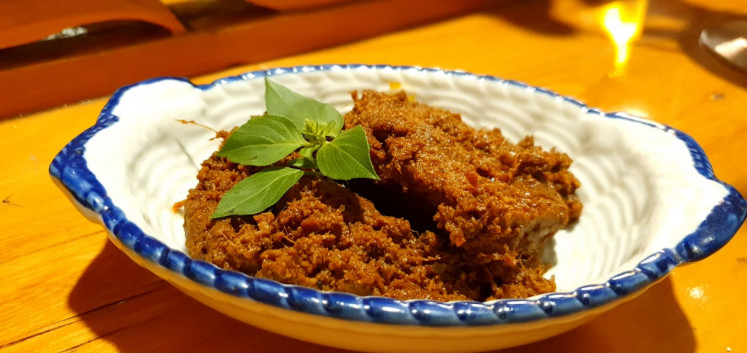
Common main ingredients are flour, eggs, margarine and sugar. The middle part of the cake is seasoned with spekuk spices, such as cinnamon, clove, mace and anise. However, the modern version of the sweet treat generally flavors the middle layer with chocolate and is layered with fruit jam.
18. Klapertar
Klapertar or klappertaart is a cake from Manado that calls for coconut, wheat flour, milk, butter and eggs. This cake gets its name from the Dutch language, which is a combination of the words "klapper" or "coconut" and "taart" which means "cake". Both the name and recipe were born during the Dutch occupation of Manado.
Some klapertar recipes mix plain bread in the dough so that after baking, it will produce a firmer klapertar that can be cut like a typical solid cake. However, there is also steamed klapertar, which has a soft texture like pudding.
19. Uvempoi
Uvempoi is a beef soup typical of Kaili, Palu, Central Sulawesi, which has a distinctive sour taste. “Uve” in the local language means water, while “mpoi” means sour. This dish is often served with burasa, rice simmered in coconut milk and cooked in banana leaves like lontong (rice cake).
The cuts of beef used for uvempoi are the ribs and the offal, which are then cooked in a savory brown soup. They are then spiced with tamarind, chili, lime juice, sugar and salt.
20. Ketupat Kandangan
Ketupat Kandangan is a typical dish originally from the Kandangan area, South Kalimantan. The difference between this dish and other types of ketupat is the use of snakehead murrel fish which is grilled and then boiled with coconut milk.
The coconut milk sauce is made from traditional spices such as cinnamon, nutmeg, cloves and cardamom. In addition, a piece of smoked fish is also served as a complement, usually carp, catfish or snakehead murrel fish.
ohmg


